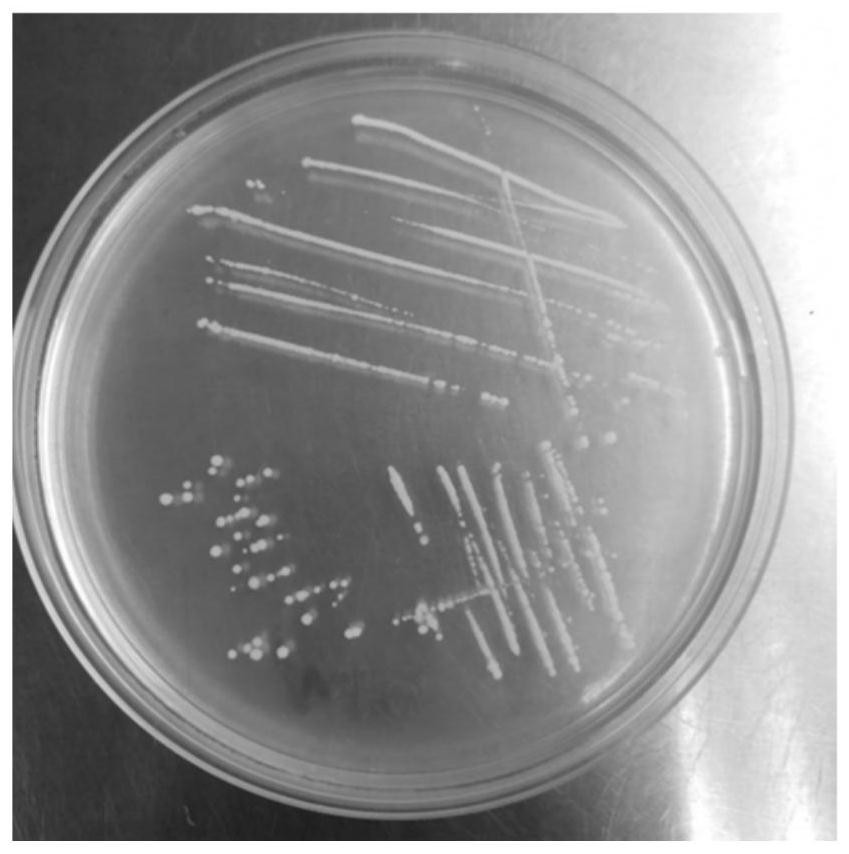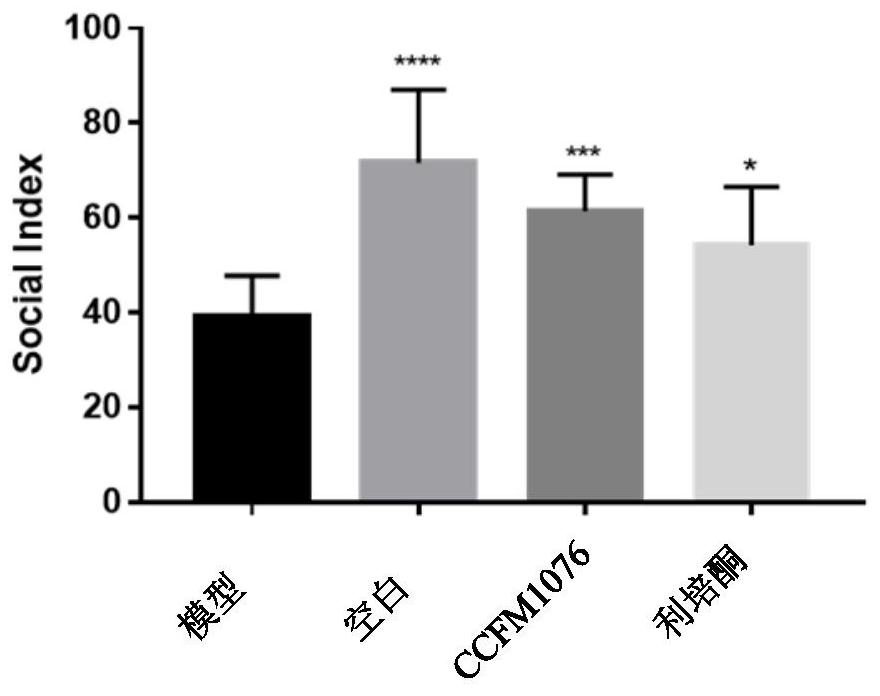Lactobacillus helveticus and the application of Lactobacillus helveticus
A technology of Lactobacillus and bacterial agents, applied in the field of functional microorganisms, can solve problems such as neuronal function damage, achieve the effects of alleviating social barriers, improving manic behavior, and improving cognitive ability
- Summary
- Abstract
- Description
- Claims
- Application Information
AI Technical Summary
Problems solved by technology
Method used
Image
Examples
Embodiment 1
[0072] Example 1: Lactobacillus helveticus CCFM1076 can significantly improve the autonomous exploration ability of autistic rats
[0073] (1) Breeding of young mice with autism
[0074] Healthy male and female wistar rats were bred and adapted to the environment for 1 week. They were caged together at 5:00 p.m. at a ratio of 2:1, and the vaginal plug was observed at 8:00 the next morning. If no vaginal plug was observed, a vaginal smear was performed. On the first day of pregnancy, the female mice were housed in separate cages after conception, and randomly divided into model group and control group. On the 12.5th day after pregnancy, intraperitoneal injection of sodium valproate (VPA) 600mg / kg (normal saline made into 250mg / mL solution) was given as the model group; Weaning.
[0075]
[0076] (2) Experimental grouping of autistic rats
[0077] Divided into control group, model group and intervention group.
[0078]
[0079] (3) Open field test of autistic rats
[...
Embodiment 2
[0081] Example 2: Lactobacillus helveticum CCFM1076 can significantly improve the social ability of autistic rats Experimental modeling, grouping and treatment methods are the same as in Example 3.
[0082] The three-box animal social behavior test is the most commonly used test to assess social impairment in autism. The tested mice were all male, the difference in birth time was not more than 1 day, and the difference in body weight was less than 15g, and they were housed in separate cages. The test is carried out in a transparent three-compartment box with a size of 60cm x 60cm x60cm. One day before the experiment, all the tested mice were put into the testing room to adapt to the environment. During the experiment, put one tested mouse into the middle small chamber and adapt to it for 10 minutes. Then put strange rats in the left chamber and cover them with empty wire cages, and put the rats in the same cage in the right chamber and cover them with the same wire cages. O...
Embodiment 3
[0083] Example 3: Lactobacillus helveticum CCFM1076 can significantly improve the repetitive stereotyped behavior of autistic rats
[0084] Experimental modeling, grouping and processing methods are the same as in Example 3.
[0085] The marble bead test is a classic test for evaluating repetitive stereotyped behaviors of autism. Put a 5cm thick corn cob bedding in the rat cage, spread it flat, put 20 glass beads (diameter 15mm), divide into five rows, each 4 in a row, arranged regularly. Put the mouse in the cage for 15 minutes, and count the number of buried glass beads (the buried volume is greater than 50%). Experimental results such as Figure 4 As shown, the number of beads buried in the autistic rats was significantly higher than that in the blank group, indicating that the Lactobacillus helveticus CCFM1076 screened by the present invention can effectively alleviate the repetitive stereotyped behavior of the autistic rats.
PUM
 Login to View More
Login to View More Abstract
Description
Claims
Application Information
 Login to View More
Login to View More - R&D
- Intellectual Property
- Life Sciences
- Materials
- Tech Scout
- Unparalleled Data Quality
- Higher Quality Content
- 60% Fewer Hallucinations
Browse by: Latest US Patents, China's latest patents, Technical Efficacy Thesaurus, Application Domain, Technology Topic, Popular Technical Reports.
© 2025 PatSnap. All rights reserved.Legal|Privacy policy|Modern Slavery Act Transparency Statement|Sitemap|About US| Contact US: help@patsnap.com



